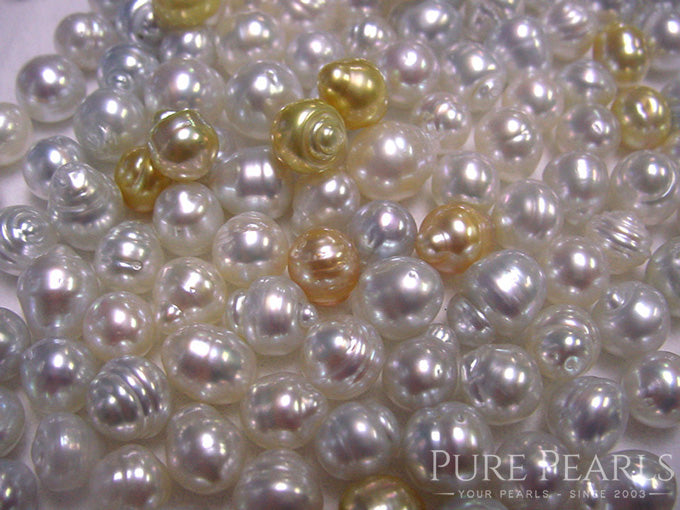Free 2-Day FedEx & 90-Day Returns
*Most Orders Ship in 24hrs
Free 2-Day FedEx & 90-Day Returns
*Most Orders Ship in 24hrs

Luster is the visible phenomenon that occurs when light strikes the surface of the pearl and also penetrates through the various layers of aragonite platelets and is reflected back at the viewer. The tighter and more compact the layers of nacre are, the more intense the pearl’s luster will appear.
A pearl’s luster is one of its most prized attributes. Ideally, pearl lovers look for crisp and highly reflective luster that displays sharp, easily distinguished lines from reflected light sources.

The new kids on the blog (lol), pearls with metallic luster are very intriguing. Many people want to know how a pearl can have ‘metallic’ luster.
Certain pearl types like the saltwater Japanese Akoya are more likely to display sharper luster than others. A very large reason behind this is due to the rate at which the mollusk, or oyster, secretes its nacre. The rate of nacre deposition is in turn affected by the animal’s environment and water temperature.
Oysters that live in warmer climates (such as the large South Sea pearl oyster, Pinctada maxima, native to Australia and the Philippines) have a higher metabolism, so they tend to secrete their nacre at a faster rate. This leads to what we generally term as “Satiny” luster, which appears as somewhat soft and diffuse around the edges, as seen below.
I like to describe it as "touchable" as these pearls have a deeper glow that begs to be touched, rather than a bright shininess.

The Akoya pearl oyster is indigenous to the colder Pacific Ocean waters of Japan, China and Vietnam.
These small saltwater oysters secrete smaller crystalline aragonite platelets that are laid down much more slowly and much more tightly, resulting in a higher, sharper rate of luster. Akoya pearls are often said to have "ball bearing" or a "mirror-like" luster - these pearls are famous for their bright, highly defined reflections and shine. Check out these AAA Quality and Hanadama Quality Akoya pearls below:

So where do Metallic Freshwater pearls come in?
Metallic Freshwater pearls are pearls that display luster that is so sharp, so crisp, that they literally appear to have a metallic surface. Scroll back up and check out the White Metallics I posted earlier to refresh: stunning right?!
Basically, Metallic Freshwater pearls' crystalline layers are extremely tight and compact. When light strikes the surface of these pearl, it is reflected back at the viewer with a maximum amount of white light.
As I said earlier: every pearl type has the ability to produce pearls of this nature, but Metallic Freshwater pearls make up less than 1% of any pearl harvest so they’re definitely a rare treat!

Colorful Freshwater Pearl displaying Metallic Luster. Notice the highly defined light sources reflected in the pearl’s surface.

Hanadama and AAA Quality Japanese Akoya Pearls Displaying Mirror-like Luster.
I hope this answers some questions about pearl luster! If you have any questions about pearl formation, the phenomenon of luster or anything about pearls really, feel free to leave it in the comments and I will do my best to answer you within 24 hours.
~Ashley